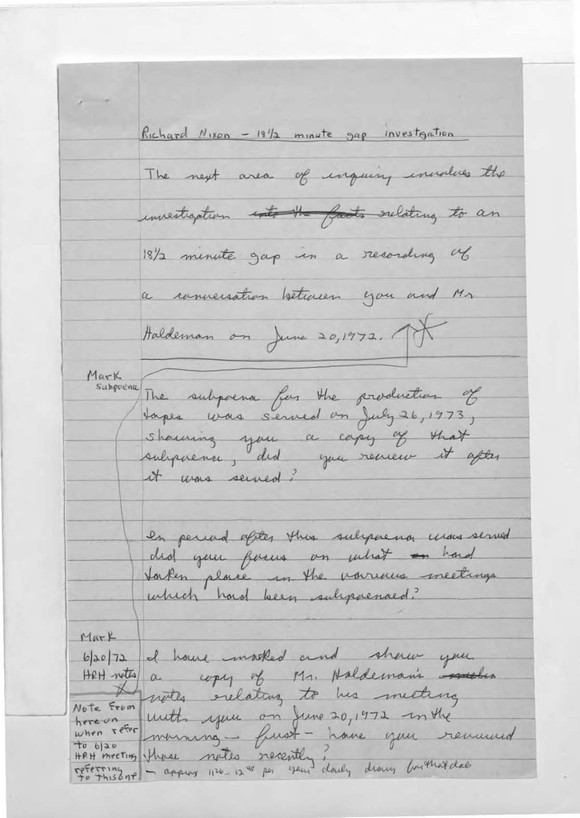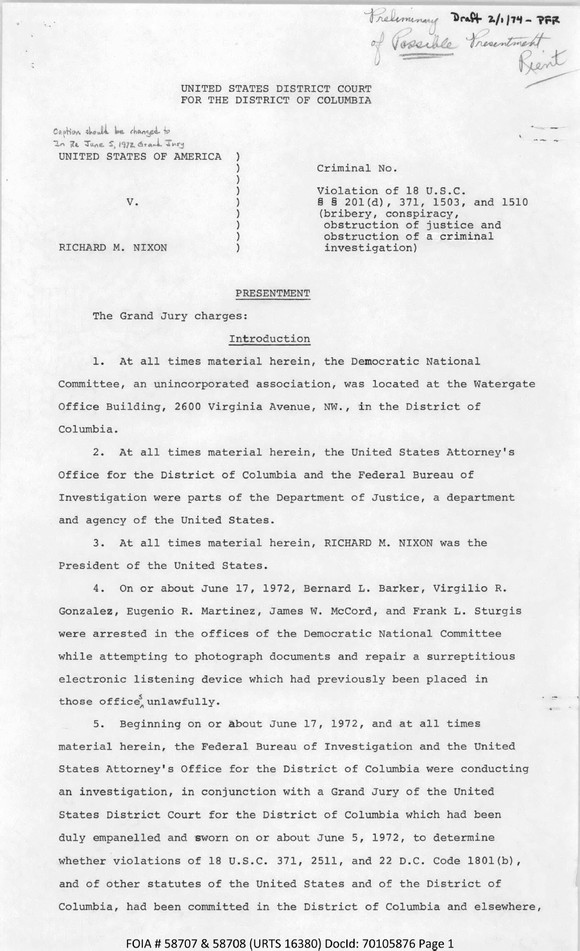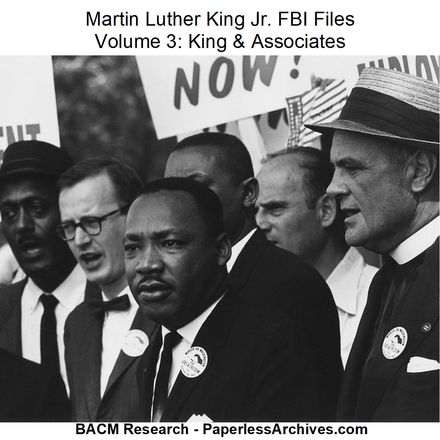Starting from:
$14.95
Watergate Special Prosecution Force (WSPF) Documents - Download
Watergate Special Prosecution Force (WSPF) Documents
5,310 pages of selected documents from and related to the Watergate Special Prosecution Force (WSPF) held by the National Archives, Record Group 460 (Records of the Watergate Special prosecution Force, 1971–1977) located at the National Archives at College Park, Maryland. The collection also contains material held by the Gerald Ford Presidential Library covering the WSPF.
On November 2, 1973, the Watergate Special Prosecution Force was established in the Department of Justice. The WSPF was tasked with investigating and prosecuting offenses surrounding the break-in at the Democratic National Committee Headquarters in the Watergate complex in 1972.
These records consist of interview notes, assorted memorandums, correspondence, grand jury records, research papers, witness documentation, assorted court files, investigative files, Ford presidential papers, and the Watergate Special Prosecution Force Final Report. Most material date during the period Leon Jaworski lead the Watergate Special Prosecution Force (WSPF), Jaworski succeeded Archibald Cox.
Three major highlights in this material are transcripts of former President Nixon’s questioning before a grand jury. A draft indictment of President Richard Nixon. The "Nixon Evidentiary Report," a statement of evidence against the president dated February 7, 1974 and drafted by Assistant Special Prosecutor named George Frampton. This report was created before anyone except the president had access to the June 23, 1972 "smoking gun" tape.
The collection focuses on two areas, first material related to Richard Nixon used by the WSPF for preparation of questioning Nixon, and the “Grand Jury Report and Recommendation Concerning Transmission of Evidence to the House of Representatives,” also referred to as "The Roadmap," a guide provided to information that could be used to pursue impeachment.
NIXON RELATED MATERIAL - PREPARATION FOR GRAND JURY
In May 1975, the Watergate Special Prosecution Force (WSPF) decided that it was necessary to question former President Richard M. Nixon in connection with various investigations being conducted by that office. The circumstances of this testimony were negotiated with Mr. Nixon’s attorneys, Herbert J. Miller, Jr., and R. Stan Mortenson. It was determined that Mr. Nixon would be questioned over the period of two days, June 23 and June 24, 1975, and that the testimony would be
taken as part of various investigations being conducted by the January 7, 1974, Grand Jury for the District of Columbia (the third Watergate Grand Jury). Chief Judge George Hart signed an order authorizing that the sworn deposition of Mr. Nixon be taken at the Coast Guard Station in San Mateo, California with two members of the grand jury present. The deposition was taken in California because Mr. Nixon’s doctor had determined that Mr. Nixon was unable to travel to Washington DC for
health reasons.
The material in this collection covers all the areas the WSPF and Mr. Nixon’s counsel agreed would be covered.
The areas of inquiry that were agreed upon by the WSPF and Mr. Nixon’s counsel were as follows:
1. The circumstances surrounding the 18½ minute gap in the tape of a meeting between Mr. Nixon and H. R. Haldeman on June 20, 1972.
2. Alleged receipt of large amounts of cash by Charles G. Rebozo or Rose Mary Woods on behalf of Mr. Nixon and financial transactions between Mr. Rebozo and Mr. Nixon.
3. Attempts to prevent the disclosure of the existence of the National Security Council wiretap program through removal of the records from the FBI, the dealing with any threats to reveal the existence of such records, and the testimony of L. Patrick Gray at his confirmation hearings to be FBI Director.
4. Any relationship between campaign contributions and the consideration of ambassadorships for Ruth Farkas, J. Fife Symington, Jr., Vincent DeRoulet, Cornelius V. Whitney, and Kingdon Gould, Jr.
5. The obtaining and release of information by the White House concerning Lawrence O’Brien through use of the Internal Revenue Service.
Mr. Nixon agreed to appear voluntarily to answer the questions of the Grand Jury. Mr. Nixon’s attorneys were present in the interview room, and they were available for consultation outside the hearing room. They were not permitted to make any statements during the actual testimony. Prior to the taking of his testimony, Mr. Nixon and his counsel were provided copies of transcripts of White House tape conversations and other documents that were proposed for use during his testimony.
There were a few subjects that the WSPF wished to explore with Mr. Nixon but for which a Grand Jury appearance was not necessary. This interview took place on June 24, 1975, from 1:00 pm to 3:00 pm following the conclusion of Mr. Nixon’s sworn Grand Jury testimony. The areas of inquiry for this interview are as follows:
1. Mr. Nixon’s knowledge of the $2 million dairy fund pledge and the relationship between that pledge and his milk price support decision in March 1971.
2. The submission of the “bluebook” to the House Judiciary Committee. (The “bluebook” was the version of tape transcripts created by the White House staff that was released on April 30, 1974.)
3. Richard Moore’s testimony concerning the La Costa meeting. (The meeting at La Costa related to the need to raise money for the Watergate burglars.)
4. References in various transcripts to the use of “goons” and Mr. Nixon’s knowledge of organized assaults on demonstrators.
GRAND JURY REPORT AND RECOMMENDATION CONCERNING TRANSMISSION OF EVIDENCE TO THE HOUSE OF REPRESENTATIVES (THE ROAD MAP) AND SUPPORTING DOCUMENTS
“It is the belief of the Grand Jury that it should presently defer to the House of Representatives and allow the House to determine what action may be warranted at this time by this evidence,” the report says.
The Watergate Special Prosecution Force had obtained evidence through the grand juries that the House Judiciary Committee had not obtained. The Road Map consists of a two-page summary, a set of 53 numbered statements of fact, and 97 supporting documents corresponding to each statement of fact. The Road Map was delivered to the United States District Court for the District of Columbia under seal on March 1, 1974. Chief Judge John Sirica then provided it to the House Judiciary Committee.
"It gave them the sum total of the evidence that we had assembled up to that point," Jaworski recalled in an interview a few years later. "We called it a road map in our office because it was just that.”
Some members of the Special Prosecutor’s Office wanted to indict the president for obstruction of justice and related crimes. Others in the office argued that the special prosecutor should draft a presentment charging Nixon with crimes, including obstruction of justice. According to this plan, the grand jury would approve the presentment and the presiding federal district court judge, John Sirica, would transmit it to the House of Representatives for its consideration in deliberations about possible impeachment proceedings against the president.
“There were no comments, no interpretations and not a word or phrase of accusatory nature. The ‘Road Map’ was simply that — a series of guideposts if the House Judiciary Committee wished to follow them,” Jaworski wrote in his 1976 memoir, “The Right and the Power: The Prosecution of Watergate.”
The Road Map itself remained completely secret until November 2018, when a court order allowed public access to the report. While most of the information in the "Road Map" has already been known to the public, it does provide an inside look at the criminal investigation into the scandal.
The Road Map, along with related documents that analyze the evidence collected by the Special Prosecutor, is located in three boxes in Record Group 460: Records of the Watergate Special Prosecution Force; Special Prosecutor’s Office Files; Records Relating to Richard M. Nixon.




5,310 pages of selected documents from and related to the Watergate Special Prosecution Force (WSPF) held by the National Archives, Record Group 460 (Records of the Watergate Special prosecution Force, 1971–1977) located at the National Archives at College Park, Maryland. The collection also contains material held by the Gerald Ford Presidential Library covering the WSPF.
On November 2, 1973, the Watergate Special Prosecution Force was established in the Department of Justice. The WSPF was tasked with investigating and prosecuting offenses surrounding the break-in at the Democratic National Committee Headquarters in the Watergate complex in 1972.
These records consist of interview notes, assorted memorandums, correspondence, grand jury records, research papers, witness documentation, assorted court files, investigative files, Ford presidential papers, and the Watergate Special Prosecution Force Final Report. Most material date during the period Leon Jaworski lead the Watergate Special Prosecution Force (WSPF), Jaworski succeeded Archibald Cox.
Three major highlights in this material are transcripts of former President Nixon’s questioning before a grand jury. A draft indictment of President Richard Nixon. The "Nixon Evidentiary Report," a statement of evidence against the president dated February 7, 1974 and drafted by Assistant Special Prosecutor named George Frampton. This report was created before anyone except the president had access to the June 23, 1972 "smoking gun" tape.
The collection focuses on two areas, first material related to Richard Nixon used by the WSPF for preparation of questioning Nixon, and the “Grand Jury Report and Recommendation Concerning Transmission of Evidence to the House of Representatives,” also referred to as "The Roadmap," a guide provided to information that could be used to pursue impeachment.
NIXON RELATED MATERIAL - PREPARATION FOR GRAND JURY
In May 1975, the Watergate Special Prosecution Force (WSPF) decided that it was necessary to question former President Richard M. Nixon in connection with various investigations being conducted by that office. The circumstances of this testimony were negotiated with Mr. Nixon’s attorneys, Herbert J. Miller, Jr., and R. Stan Mortenson. It was determined that Mr. Nixon would be questioned over the period of two days, June 23 and June 24, 1975, and that the testimony would be
taken as part of various investigations being conducted by the January 7, 1974, Grand Jury for the District of Columbia (the third Watergate Grand Jury). Chief Judge George Hart signed an order authorizing that the sworn deposition of Mr. Nixon be taken at the Coast Guard Station in San Mateo, California with two members of the grand jury present. The deposition was taken in California because Mr. Nixon’s doctor had determined that Mr. Nixon was unable to travel to Washington DC for
health reasons.
The material in this collection covers all the areas the WSPF and Mr. Nixon’s counsel agreed would be covered.
The areas of inquiry that were agreed upon by the WSPF and Mr. Nixon’s counsel were as follows:
1. The circumstances surrounding the 18½ minute gap in the tape of a meeting between Mr. Nixon and H. R. Haldeman on June 20, 1972.
2. Alleged receipt of large amounts of cash by Charles G. Rebozo or Rose Mary Woods on behalf of Mr. Nixon and financial transactions between Mr. Rebozo and Mr. Nixon.
3. Attempts to prevent the disclosure of the existence of the National Security Council wiretap program through removal of the records from the FBI, the dealing with any threats to reveal the existence of such records, and the testimony of L. Patrick Gray at his confirmation hearings to be FBI Director.
4. Any relationship between campaign contributions and the consideration of ambassadorships for Ruth Farkas, J. Fife Symington, Jr., Vincent DeRoulet, Cornelius V. Whitney, and Kingdon Gould, Jr.
5. The obtaining and release of information by the White House concerning Lawrence O’Brien through use of the Internal Revenue Service.
Mr. Nixon agreed to appear voluntarily to answer the questions of the Grand Jury. Mr. Nixon’s attorneys were present in the interview room, and they were available for consultation outside the hearing room. They were not permitted to make any statements during the actual testimony. Prior to the taking of his testimony, Mr. Nixon and his counsel were provided copies of transcripts of White House tape conversations and other documents that were proposed for use during his testimony.
There were a few subjects that the WSPF wished to explore with Mr. Nixon but for which a Grand Jury appearance was not necessary. This interview took place on June 24, 1975, from 1:00 pm to 3:00 pm following the conclusion of Mr. Nixon’s sworn Grand Jury testimony. The areas of inquiry for this interview are as follows:
1. Mr. Nixon’s knowledge of the $2 million dairy fund pledge and the relationship between that pledge and his milk price support decision in March 1971.
2. The submission of the “bluebook” to the House Judiciary Committee. (The “bluebook” was the version of tape transcripts created by the White House staff that was released on April 30, 1974.)
3. Richard Moore’s testimony concerning the La Costa meeting. (The meeting at La Costa related to the need to raise money for the Watergate burglars.)
4. References in various transcripts to the use of “goons” and Mr. Nixon’s knowledge of organized assaults on demonstrators.
GRAND JURY REPORT AND RECOMMENDATION CONCERNING TRANSMISSION OF EVIDENCE TO THE HOUSE OF REPRESENTATIVES (THE ROAD MAP) AND SUPPORTING DOCUMENTS
“It is the belief of the Grand Jury that it should presently defer to the House of Representatives and allow the House to determine what action may be warranted at this time by this evidence,” the report says.
The Watergate Special Prosecution Force had obtained evidence through the grand juries that the House Judiciary Committee had not obtained. The Road Map consists of a two-page summary, a set of 53 numbered statements of fact, and 97 supporting documents corresponding to each statement of fact. The Road Map was delivered to the United States District Court for the District of Columbia under seal on March 1, 1974. Chief Judge John Sirica then provided it to the House Judiciary Committee.
"It gave them the sum total of the evidence that we had assembled up to that point," Jaworski recalled in an interview a few years later. "We called it a road map in our office because it was just that.”
Some members of the Special Prosecutor’s Office wanted to indict the president for obstruction of justice and related crimes. Others in the office argued that the special prosecutor should draft a presentment charging Nixon with crimes, including obstruction of justice. According to this plan, the grand jury would approve the presentment and the presiding federal district court judge, John Sirica, would transmit it to the House of Representatives for its consideration in deliberations about possible impeachment proceedings against the president.
“There were no comments, no interpretations and not a word or phrase of accusatory nature. The ‘Road Map’ was simply that — a series of guideposts if the House Judiciary Committee wished to follow them,” Jaworski wrote in his 1976 memoir, “The Right and the Power: The Prosecution of Watergate.”
The Road Map itself remained completely secret until November 2018, when a court order allowed public access to the report. While most of the information in the "Road Map" has already been known to the public, it does provide an inside look at the criminal investigation into the scandal.
The Road Map, along with related documents that analyze the evidence collected by the Special Prosecutor, is located in three boxes in Record Group 460: Records of the Watergate Special Prosecution Force; Special Prosecutor’s Office Files; Records Relating to Richard M. Nixon.




1 file (542.2MB)



